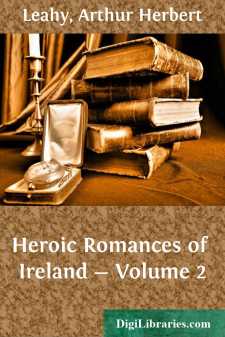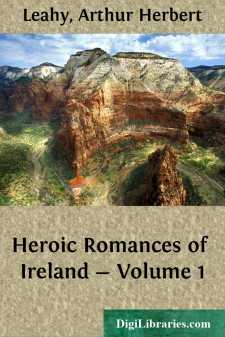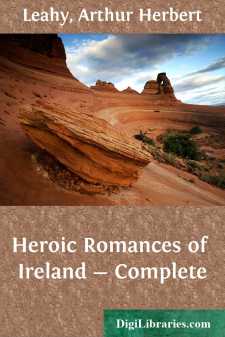Categories
- Antiques & Collectibles 13
- Architecture 36
- Art 48
- Bibles 22
- Biography & Autobiography 813
- Body, Mind & Spirit 142
- Business & Economics 28
- Children's Books 14
- Children's Fiction 11
- Computers 4
- Cooking 94
- Crafts & Hobbies 4
- Drama 346
- Education 46
- Family & Relationships 57
- Fiction 11829
- Games 19
- Gardening 17
- Health & Fitness 34
- History 1377
- House & Home 1
- Humor 147
- Juvenile Fiction 1873
- Juvenile Nonfiction 202
- Language Arts & Disciplines 88
- Law 16
- Literary Collections 686
- Literary Criticism 179
- Mathematics 13
- Medical 41
- Music 40
- Nature 179
- Non-Classifiable 1768
- Performing Arts 7
- Periodicals 1453
- Philosophy 64
- Photography 2
- Poetry 896
- Political Science 203
- Psychology 42
- Reference 154
- Religion 513
- Science 126
- Self-Help 84
- Social Science 81
- Sports & Recreation 34
- Study Aids 3
- Technology & Engineering 59
- Transportation 23
- Travel 463
- True Crime 29
Heroic Romances of Ireland - Volume 2
Categories:
Description:
Excerpt
INTRODUCTION
The Tain bo Fraich, the Driving of the Cattle of Fraech, has apparently only one version; the different manuscripts which contain it differing in very small points; most of which seem to be due to scribal errors.
Practically the tale consists of two quite separate parts. The first, the longer portion, gives the adventures of Fraech at the court of Ailill and Maev of Connaught, his courtship of their daughter, Finnabar, and closes with a promised betrothal. The second part is an account of an expedition undertaken by Fraech to the Alps "in the north of the land of the Long Beards," to recover stolen cattle, as well as his wife," who is stated by O'Beirne Crowe, on the authority of the "Courtship of Trebland" in the Book of Fermoy, to have been Trebland, a semi-deity, like Fraech himself. Except that Fraech is the chief actor in both parts, and that there is one short reference at the end of the second part to the fact that Fraech did, as he had promised in the first part, join Ailill and Maev upon the War of Cualnge, there is no connection between the two stories. But the difference between the two parts is not only in the subject-matter; the difference in the style is even yet more apparent. The first part has, I think, the most complicated plot of any Irish romance, it abounds in brilliant descriptions, and, although the original is in prose, it is, in feeling, highly poetic. The second part resembles in its simplicity and rapid action the other "fore tales" or preludes to the War of Cualnge contained in this volume, and is of a style represented in English by the narrative ballad.
In spite of the various characters of the two parts, the story seems to have been regarded as one in all the manuscripts which contain it; and the question how these two romances came to be regarded as one story becomes interesting. The natural hypothesis would be that the last part was the original version, which was in its earlier part re-written by a man of genius, possibly drawing his plot from some brief statement that Finnabar was promised to Fraech in return for the help that he and his recovered cattle could give in the Great War; but a difficulty, which prevents us from regarding the second part as an original legend, at once comes in. The second part of the story happens to contain so many references to nations outside Ireland that its date can be pretty well fixed. Fraech and his companions go, over the sea from Ulster, i.e. to Scotland; then through "north Saxon-land" to the sea of Icht (i.e. the sea of Wight or the English Channel); then to the Alps in the north of the land of the Long-Beards, or Lombards. The Long-Beards do not appear in Italy until the end of the sixth century; the suggestion of North Saxon-Land reaching down to the sea of Wight suggests that there was then a South Saxon-Land, familiar to an Irish writer, dating this part of the story as before the end of the eighth century, when both Saxons and Long-Beards were overcome by Charlemagne....




